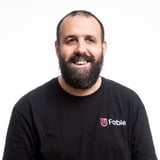Summary
Megan Blocker will talk about how to decide where to invest your precious time and attention for maximum impact. In other words, where is it most important for your team to get serious about ResearchOps, and where is it okay to stay scrappy? How can you grow sustainably by picking and choosing your battles? It all depends on your goals, your context, and your priorities. We’ll talk about a framework for making those decisions, and about how applying it worked for our growing team.
Key Insights
-
•
Scaling research requires balancing skill levels, organizational scale, culture, and leadership buy-in.
-
•
You don't need formal research titles to do research; skills can be distributed across designers, PMs, and others.
-
•
A small research team serving a large organization can leverage apprenticeship and education models to expand impact.
-
•
Building a large, engaged user testbed quickly is possible with minimal resources and has strategic benefits.
-
•
Leadership buy-in is signaled not just by budget but by leaders seeking out research to guide decisions.
-
•
Organizational culture shapes how you implement research — entrepreneurial cultures allow quicker experiments, hierarchical ones require stakeholder management.
-
•
Developing reusable tools, templates, and playbooks helps scale quality research across a growing organization.
-
•
Scrappy grassroots efforts can lead to formalized, systematic research programs over time.
-
•
Continuous storytelling and advocacy are essential for gaining and maintaining leadership support.
-
•
Research scale and focus need continual reassessment as team size, culture, and buy-in evolve.
Notable Quotes
"I realized that dedicating my time and energy into something that wasn’t going to be used was not a good use of my time."
"Research skill and talent can be present in many different kinds of people, you don’t have to have research in your title."
"In a hierarchical culture, you ask permission; in an entrepreneurial culture, you ask forgiveness."
"We made a 250-person testbed grow to 1200 people in under a week just through one email campaign."
"If you want access to those names, you got to come through us and show your research plan, which helped us ensure quality."
"We focused on interviewing and synthesis because those methods were most likely to be employed by our product managers."
"Offers of championship from leaders, like 'What do you need from me?' are strong signs of buy-in."
"Our education program isn’t just basic info—it builds empathy and literacy across the whole product team."
"Scrappy grassroots methods never fully go away; you always need to ask where you can get scrappy next."
"Stakeholder analysis and managing stakeholders is critical in hierarchical cultures to maintain trust."
Or choose a question:
















More Videos

"When the whole team is trained in design thinking, they are measurably more aligned, more efficient, and more agile."
Doug PowellClosing Keynote: Design at Scale
November 8, 2018

"Recruiting kids really means recruiting adults as their proxies and gatekeepers."
Mila Kuznetsova Lucy DentonHow Lessons Learned from Our Youngest Users Can Help Us Evolve our Practices
March 9, 2022

"In Toronto it’s now illegal to transmit a Wi-Fi signal in designated public spaces, with penalties for violations—a policy driven by people wanting to unplug from digital life."
Sarah GallimoreInspire Progress with Artifacts from the Future
November 18, 2022

"Field usability testing showed stakeholders immediately how much value UX can add by catching issues before deployment."
Lada Gorlenko Sharbani Dhar Sébastien Malo Rob Mitzel Ivana Ng Michal Anne RogondinoTheme 1: Discussion
January 8, 2024

"We created an AI persona called Dreamweaver to answer real-time team capacity and project questions."
Alnie FigueroaThe Future of Design Operations: Transforming Our Craft
September 10, 2025

"Meaningfulness is linked directly to what your organization cares about in terms of goals and priorities."
Landon BarnesAre My Research Findings Actually Meaningful?
March 10, 2022

"It’s the worst thing when someone feels dumb in front of a customer because the tools don’t support them."
Emily EagleCan't Rewind: Radio and Retail
June 3, 2019

"Keep a pulse on your team morale because re-platforming journeys can either enrich or burn out your people."
Malini RaoLessons Learned from a 4-year Product Re-platforming Journey
June 9, 2021

"Assume positive intent, practice a service mindset, and curiosity over ego — remember we’re all in this together."
Asia HoePartnering with Product: A Journey from Junior to Senior Design
November 29, 2023
Latest Books All books
Dig deeper with the Rosenbot
What are some historic innovations that originated from solving accessibility challenges?
What training and certification methods support non-researchers running low-risk UX studies?
What evidence exists that service design contributes to business outcomes such as customer retention and digital transformation success?
















